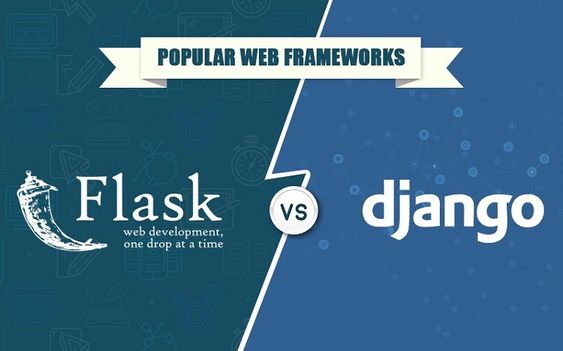Understanding the Strengths, Weaknesses, and Ideal Applications of Django and Flask
Dive deep into the world of Python web development as we compare Django and Flask – two leading frameworks. Learn their strengths, weaknesses, and which one to choose based on your specific project needs.

The world of web development is replete with tools and frameworks, each promising to streamline and enhance your projects. In the Python arena, Django and Flask are two frameworks that often stand head-to-head. Choosing the right framework for your project is critical, as it can significantly influence the process and outcome of your work.
Django: The Monolith
Django labels itself as a “high-level Python web framework that encourages rapid development and clean, pragmatic design.” It follows a monolithic approach, providing developers with everything they need out of the box. This includes an ORM (Object-Relational Mapping), authentication support, and a convenient admin interface.
Pros of Django:
- Batteries Included: Django comes packed with most of the components you’ll need when developing web apps, saving you from third-party integrations.
- Admin Interface: Django’s automatic admin interface is a time-saver for managing content and users.
- Scalable: Django’s architecture makes it suitable for high-load applications.
Cons of Django:
- Steep Learning Curve: Django can be overwhelming for beginners due to its rich and complex structure.
- Less Flexibility: Django’s “batteries included” approach can be a hindrance if you want to use different components than those provided by default.
Flask: The Microframework
Flask, on the other hand, is a lightweight and easy-to-use microframework. It doesn’t provide as many features out-of-the-box as Django does, instead offering flexibility and control, allowing you to add only what you need.
Pros of Flask:
- Simplicity: Flask’s bare-minimum and modular approach makes it easier to understand and use, especially for beginners.
- Flexibility: You can choose your tools and libraries, which makes Flask very adaptable to different project requirements.
- Efficient for Small Apps: Due to its simplicity, Flask is ideal for smaller applications or microservices.
Cons of Flask:
- Requires Additional Tools: You’ll likely need to integrate third-party libraries for functionalities like database ORM and user authentication.
- Not Built for High-load: Flask may not be the best choice for high-traffic websites, as it doesn’t scale as well as Django.
Choosing Between Django and Flask
The choice between Django and Flask largely depends on your specific project needs.
If you’re developing a large-scale, feature-rich web application and don’t mind the steep learning curve, Django’s all-in-one nature can be a huge time saver. Django’s built-in admin panel and high scalability make it perfect for robust applications.
Conversely, if you’re working on a small application, learning Python web development, or desire more control over your tools, Flask is an excellent choice. Its simplicity, flexibility, and the ability to add only what you need can make your coding experience smoother and more efficient.
Conclusion
While Django and Flask have distinct strengths and weaknesses, they both maintain a strong foothold in the world of Python web development. Your choice should depend on the scale, complexity, and specific needs of your project. Remember, the best tool is the one that makes your work easier, more efficient, and more enjoyable.
- Written by: Anju Goerge
- Posted on: August 8, 2023
- Tags: Django, Flask, Python, web development

